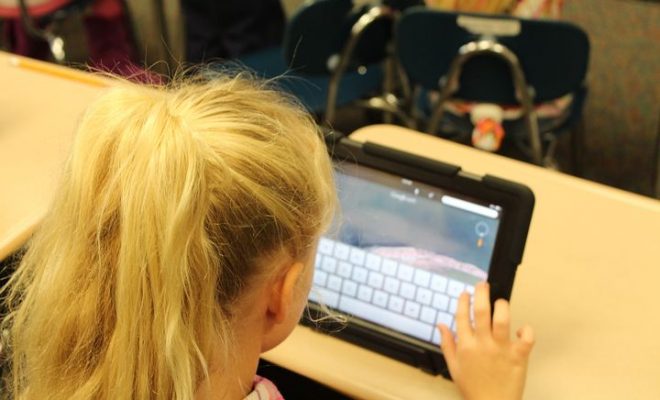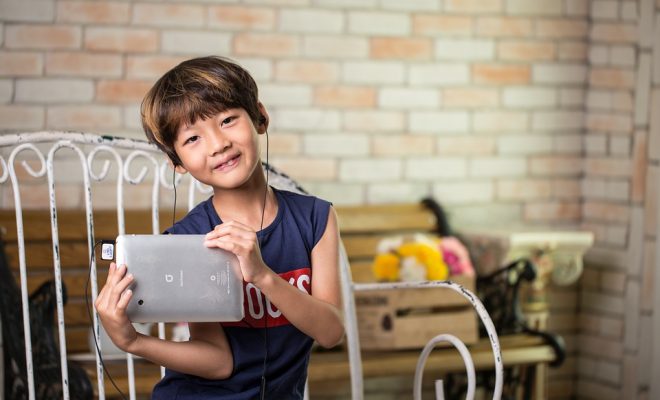Assistive Technology for Students with Disabilities

Traditionally, students with disabilities have been expected to stand out—and not necessarily in a way that is conducive to their education. These days, however, thanks in large part to technology, students with disabilities can enjoy a customized, comfortable, and cool learning experience.
An estimated 6.5 million children in the U.S. have disabilities. Meeting the needs of these students poses special challenges and requires innovative efforts to overcome.
In 2015, 22 percent of non-institutionalized adults with disabilities had less than a high school education. If this statistic was applied to the general population, my suspicion is that there would be an outcry to reform K-12 education to have better graduation results. But for students with disabilities, there is no shock or outrage.
Considering that the American educational system is about the democratization of knowledge for all students—the current state of education for students with disabilities is something that has to change.
Granted, this is no easy problem to solve. After all, there are many factors to consider, including making sure that special education programs are well-tailored to these students, and ensuring that they fit in at school so that they can feel more comfortable in their learning environment.
There is something that will serve as a saving grace for the education quality of students with disabilities: technology.
A Customized, Tailored Learning Experience Empowered by Technology
The word “technology” automatically conjures up images of cutting-edge electronics, but this is not necessarily the case when it comes to assistive technology for students with disabilities. Some assistive technology is possible with just simple accommodations. Whether high-tech or simple in design, assistive technology can transform the learning experiences for the children who benefit.
Let’s look at assistive technology and how that can transform the world of education for students with disabilities. Assistive technology in K-12 classrooms, by definition, is designed to “improve the functional capabilities of a child with a disability.”
The concept of assistive technology to help special education students achieve more in K-12 classrooms is nothing new. However, the portability of many of the devices is a relatively new trend that is making a big impact on the ways students with special needs learn. Assistive technology devices used to be big, clunky pieces of equipment that drew attention to learning and physical disabilities. Today, assistive devices are often the same types of technology K-12 students are using in traditional classrooms, and there is a “coolness” factor in both instances.
The way that assistive technology looks is just one aspect of its effectiveness, though. The use of assistive technology is also changing to provide students with more customized learning experiences. Studies show that dropout rates for special education students are on the decline – at least partially because the technology exists to keep these kids comfortable and in class longer than in the past.
What are these amazing technologies that are responsible for keeping students with disabilities in school? Let’s be more specific about the types of technologies that are popping up in classrooms all over the United States.
There are alternative input devices. Alternative input devices are designed to allow students with disabilities to use computers and related technology easily. They include touch screens, modified keyboards, and even joysticks that direct a cursor through the use of body parts like chins, hands, or feet. Some up-and-coming technology in this area is sip-and-puff systems, developed by companies like Microsoft, to perform computer functions just by inhaling and exhaling. On-screen keyboards are another area of input technology that is providing K-12 learners with disabilities better use of computers and mobile devices for learning.
There are speech-to-text options, which is making mainstream waves through its use in popular cell phones like the Android-platform Razr M. While it is a convenience tool for people without disabilities, speech-to-text provides a learning advantage for students who have mobility or dexterity problems, or those who are blind. It allows students to speak their thoughts without typing and even navigate the Internet. Speech-to-text options can also “talk back” to students and let them know about potential errors in their work.
Another handy option? Sensory enhancers. These take into account the fact that some children with disabilities may need to learn differently than their peers. Instead of ABCs and numbers first, a child with language hindrances may benefit from bright pictures or colors to learn new concepts. Sensory enhancers may include voice analyzers, augmentative communication tools or speech synthesizers. With the rapid growth of technology in the classroom, these basic tools of assistive technology are seeing great strides.
There are also screen readers, which is slightly different from text-to-speech because it simply informs students of what is on a screen. A student who is blind or struggling to see what is on the screen can benefit from the audio interface screen readers provide. Students who struggle to do what so many other Americans accomplish so easily – glean information from a computer screen in a matter of seconds – can learn more easily through technology meant to inform them.
For students with autism and related disorders, LAMP may be useful. LAMP, or Language Acquisition through Motor Planning, connects neurological and motor learning in a way that makes communication easier for students with autism and related disorders. These principles have proven especially helpful for students who do not speak or have very limited verbal skills. Paired with technology, LAMP principles empower a growing student population with autism to effectively communicate and reach higher academic achievements. LAMP is present in technology – from specially made computers to learning apps.
Finally, it’s worth mentioning that even devices that do not seem like they are specially designed for children with disabilities can be useful to them. For example, depending who you ask, the iPad has varying effects on children with autism – but most parents and teachers would say that the device has made in-roads in their students’ attitude about learning.
Experts at Apple say that iPads “cure” sensory overload and give autism children control, along with a way they can communicate effectively. Using less extreme language, researchers at Vanderbilt University say that speech-generating devices, like iPads, can encourage late-speaking children with autism spectrum disorders to speak, even from the ages of 5 to 8. In other words, the basic technology that is readily available in classrooms and many households is also effective in learning initiatives for children with a specific disorder that impacts traditional learning.
The iPad is just one example. E-readers with screen variance in size of the font, brightness and even speaking command options make in-classroom learning possible for children with sight obstacles. Students who need extra help learning to read can spend that extra time with e-readers or computer programs that customize the experience. Students with physical disabilities can sit at a regular computer in a traditional classroom and use specific equipment or simply their voices to achieve the same academic results as their peers.
Taking a closer look at the assistive technology that exists today and is in development for the near future shows that these tools are carefully designed to integrate with typical technology. Students are the beneficiaries of this. After all, technology alone is useless if the children are not comfortable using it.
People Who Get It: the Arizona Department of Education
In December 2014, the Arizona Department of Education announced a $260,000 federal grant among traditional public and charter schools in 12 districts to aid specifically with assistive education efforts. Through the grant, students with special needs can get personalized technology for iPads, notebook-size word processors and electronic pens that can scan words and display definitions. All of these efforts are intended to keep special education students in the K-12 system through graduation by having the technology to keep up in class.
This is not the first effort by the state to give an advantage to students with special learning needs. To help with the small technology budgets, the Education Department has an assistive-technology loan library on the Northern Arizona University campus. Last year, schools checked out over 2,000 items – ranging from pencil grips to iPads – to allow teachers and students to give the devices a trial run before the district made the purchase.
The assistive technology initiatives in Arizona district place traditional classroom inclusion on a pedestal with a heavy emphasis on technology. What administrators are finding is that non-verbal kids with devices prove they know a lot more than even they realize. Students with autism, cerebral palsy, and other disorders that impair speech are reaping the benefits of these devices and feeling successful. Best of all: the students are developing better relationships with one another.
We still have a long way to go before we can truly say we are meeting the needs of students with disabilities in America. However, thanks to technology, classroom inclusion, and targeted efforts to serve special needs students, we are going in the right direction. Perhaps this generation of K-12 students will be the highest-achieving yet.






